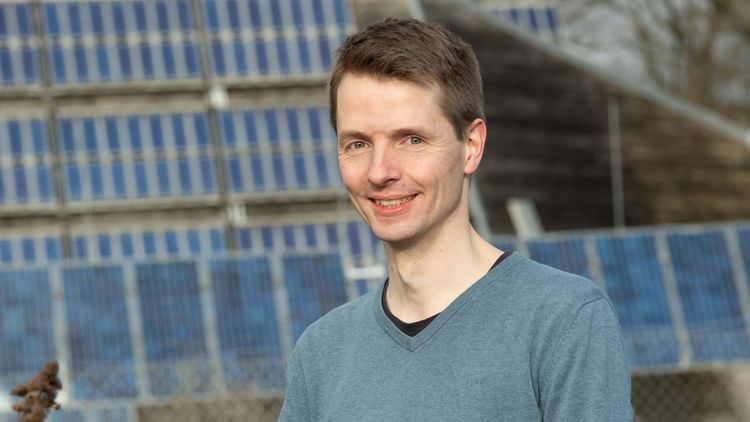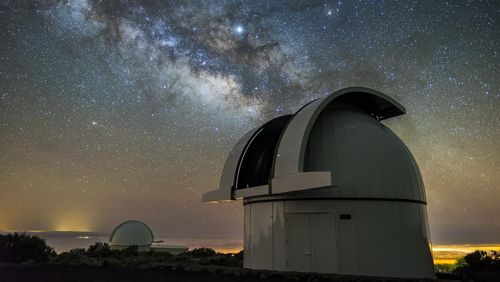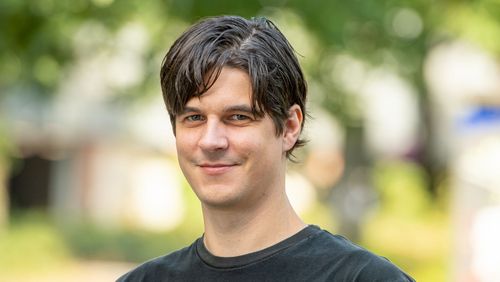Physicist Jan Vogelsang uses innovative laser systems to study ultrafast processes. The University has awarded him a Carl von Ossietzky Young Researchers' Fellowship for his work.
Like a model or a film star on the red carpet, Jan Vogelsang is used to flurries of flashing lights. However, rather than being in the spotlight himself, he is the one to produce the flashes – more than a hundred thousand per second – using sophisticated laser systems. Incredibly fast processes are the focus of his experiments: Vogelsang is studying electron motion in nanostructures.
"My work is a bit like that of a sports photographer," explains Vogelsang (33), who has been conducting his research at the University's Institute of Physics on the Carl von Ossietzky Young Researchers' Fellowship since November 2020. "If he wants a shot of an athlete in mid-jump, he needs a fast shutter speed so that the image is sharp." In other words, the flash has to be shorter than the process that is to be caught on camera. And the processes Vogelsang studies occur in extremely short time intervals: it takes just a few attoseconds for an electron, excited by a laser pulse, to detach from an atom. For context, two attoseconds are to a second what a second is to the age of the universe (estimated at about 13.77 billion years).
From Oldenburg to Lund – and back again
So the light flashes Vogelsang uses have to be equally short. In his doctoral thesis, which he completed at the University of Oldenburg in 2019, he experimented with ultrashort light pulses and built an innovative electron microscope that can film processes in structures only a few nanometres (or billionths of a metre) in size. Using this microscope, he was able to obtain unprecedented spatio-temporal resolution and thus capture extremely small and ultrafast phenomena on film. For this research he received the Friedrich Hirzebruch Prize awarded by the Studienstiftung des Deutschen Volkes (German National Academic Foundation), as well as an Outstanding Doctoral Thesis Award from the University Society of Oldenburg (UGO). He then went to Sweden, where he spent three years as a post-doctoral researcher at Lund University and continued with his experiments, focusing on the new possibilities that the combination of electron microscopy and extremely powerful laser systems offers.
In Lund, Vogelsang used consecutive light pulses from this type of laser system to make sophisticated measurements. With a first light pulse he stimulated electrons to move within the nanostructures. Then he used a second light pulse to film the electrons in motion with the aid of an electron microscope. He repeated the process many times, varying the time intervals between the two pulses. In this way he was able to obtain images that showed the different stages of the process, and then compile the images into films.
The number of light pulses a laser system can produce within a certain interval of time also determines which physical processes can be investigated using this specific technique. "Conventional systems work with visible light and produce pulses that last a few femtoseconds," says Vogelsang. In lasers that use extremely shortwave ultraviolet light, the duration of the pulses can be further and significantly shortened, he explains. "However, generating large numbers of such short UV pulses is in itself very challenging and the subject of current research." The systems that Vogelsang worked with at Lund University and now plans to set up in Oldenburg could generate up to 200,000 pulses per second. He is thus expanding on research which is already taking place here, in the laboratories of Professor Christoph Lienau and Professor Matthias Wollenhaupt. "We will be able to complete in a single working day experiments that would previously have taken ten days to implement," Vogelsang says. This will pave the way for experiments that had so far been impossible because the laser systems function stably only for a limited period of time.
Testing techniques, optimizing solar cells
In order to test this new investigative method and its potential uses, Vogelsang is first applying it to processes that are already relatively well researched: he uses the light pulses to excite electrons in materials such as gold or silver and film their movements. However, it is structures that consist of several different materials, for example metals and semiconductors, that particularly interest him. Here, he aims to find out how the electrons move across the junctions between the different materials.
In the long term, his research could for example help to foster innovations in solar cells. "Silicon has already been optimized to a large degree, but for other materials there is still plenty of potential for further development," says Vogelsang. In current practice, scientists experiment with different materials on the basis of which they construct solar cells and then test their efficiency. However, what exactly happens when electrons are released from atoms in solar cells, thereby generating electric current, has not yet been fully clarified. Vogelsang's work could thus contribute to a more targeted selection and adaptation of new materials. "In this way, basic research can help to make practical experiments more efficient," says Vogelsang.






